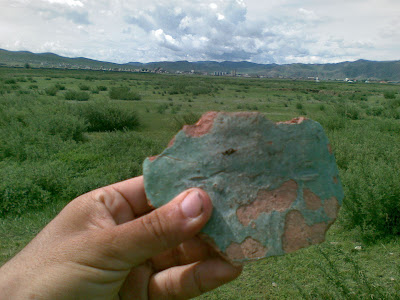Heading southeast from UB towards the Chinese border the monotonous landscape is broken by a few small, run-down towns amidst the unending, patchy steppe. (The curious thing about the Mongolian steppe is that, when seen from a distance, it looks lush and green, but up close you discover that there is in fact more barren ground than there is vegetation.) Pretty unassuming and rather boring by and large, although there is a wonderful curiosity just off the main road. Not signposted or marked on any maps and surrounded by a rusting barbed-wire fence some 25km north of the town of Choir are what is left of what was once the largest Soviet airbase. All the jets and really exciting equipment has, of course, been taken away, but the 50 or so domed hangars and slowly crumbling support and command buildings are still there, testament to both the sway that the Soviet Union once held over Mongolia, as well as to the frostiness of relations between the former and the other great Communist power, China. Although the site is abandoned militarily, a handful of families occupy the base with their gers and herds of goats, their only reason for being there to shoo out pesky tourists who come nosing around (why I have no idea). So although I managed to sneak under the barbed wire without much problem and even poked around a few of the hangars I was inevitably caught (ambling around with a 20kg backpack is not particularly stealthy) and politely escorted off. A shame, as there's certainly a business opportunity going begging there.
 |
| One of the hangars in the abandoned airforce base outside Choir. Once they housed MiG 25s, now they just house goats. |


